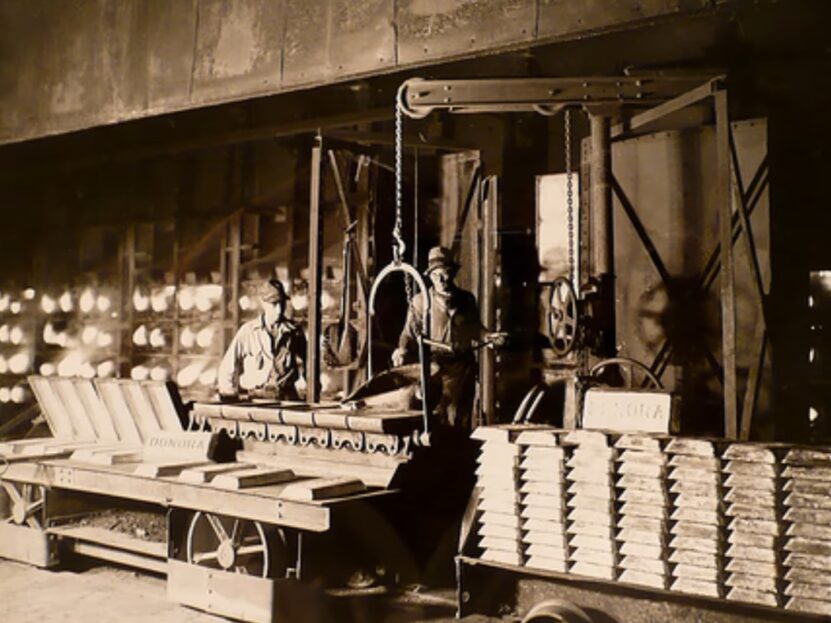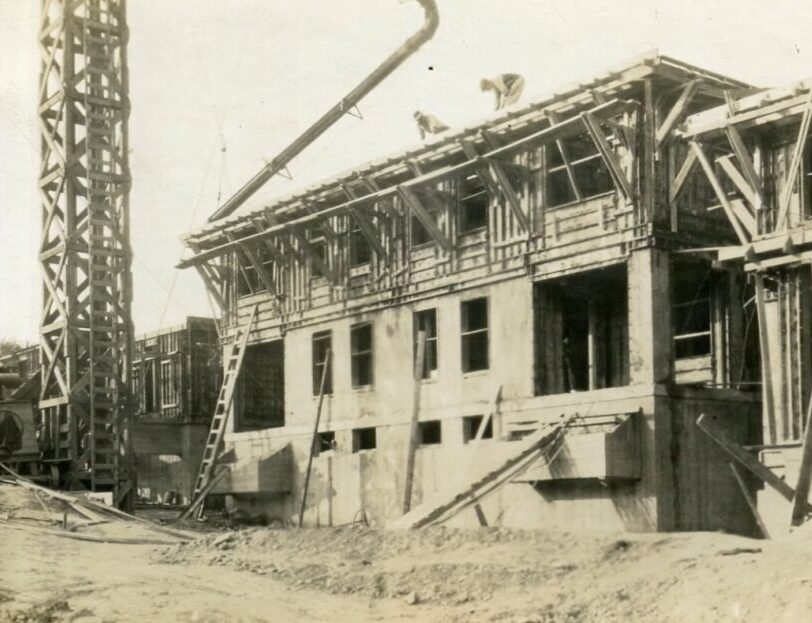The story of Cement City is deeply intertwined with the transformation of West Dallas, marking a pivotal era of industrial development, cultural diversity, and community resilience. It all began with the arrival of the Horton family in 1844, who settled near the West Fork of the Trinity River and Eagle Ford, laying the foundation for the region’s future.
The Genesis of the City
Cement City’s origins, deeply rooted in the early settlements of Dallas County, mark the beginning of a transformative journey for West Dallas.
The Arrival of the Horton Family

It all began with the arrival of the Horton family from Missouri in 1844. Receiving several Peters Colony land grants, they settled near key geographical landmarks: the West Fork of the Trinity River, Eagle Mountain Lake, Chalk Hill, and Eagle Ford.
Here, James Horton established his life as a farmer and operated a grist mill, inadvertently setting the stage for the region’s future evolution. The Horton family’s connection to Dallas was further solidified when Sarah Horton married Alexander Cockrell, who would move on to purchase unsold lots of John Neely Bryan’s original Dallas town in 1852.
This acquisition was more than just a real estate transaction; it represented the early threads of community and urban development in the region.
A Catalyst for Transformation

By 1907, a pivotal moment in the history of West Dallas occurred with the establishment of the Southwestern States Cement Company. This marked the inception of Cement City, a village that emerged around the company’s operations.
The company’s arrival in Dallas County, particularly in the vicinity of the old LaReunion Colony, was more than just an industrial development; it was the cornerstone of a profound socio-economic transformation. The purchase of property for the cement plant involved a historical handover of land, reflecting the names of these original pioneers who had since left the area.
The company’s impact on the community was immediate and significant. By 1909, the Southwestern States Cement Company constructed housing for its employees, a stark reflection of the era’s living conditions – no gas, no electricity, only cold water.
City’s Growth

Despite these hardships, the village grew, predominantly inhabited by Mexican workers and a few African Americans, reflecting the diverse workforce that was drawn to the opportunities the plant presented. These workers, many of whom were fleeing the Mexican Revolution, found a semblance of stability and livelihood in Cement City, despite the hard and often unsteady work.
The legacy of the company extended beyond its immediate vicinity. The Trinity Portland Cement Company (renamed in 1915) was instrumental in local construction projects, including the Houston Street Viaduct built between 1910 and 1912.
This structure, once the world’s longest reinforced concrete bridge, was a testament to the company’s influence and the industrial prowess of Cement City.
The Demise and Legacy

The eventual decline of Cement City began with the company moving its headquarters away in 1987. The once-bustling community, a hub of industrial activity and diverse cultural interactions, gradually diminished.
What remained were the remnants of the cement plant – smokestacks, silos, and the natural topography of cliffs and hills. As nature began to reclaim the land, the once-thriving village of Cement City faded into history.
However, the story of Cement City is not just one of industrial rise and fall. It is a tale interwoven with the lives of its inhabitants – the early settlers, the Europeans, the cowboys, and the Mexican plant workers.
These groups, each contributing their unique cultural and social dynamics, created a tapestry of human experience that is still tangible in West Dallas today. The buried artifacts, soon to be discovered by new generations tilling gardens or planting shrubs, are not just remnants of a bygone era but are symbols of the rich, multifaceted history that shaped West Dallas.
Transformative Role
The establishment, growth, and eventual decline of Cement City were not merely isolated events in the history of West Dallas. They were catalysts for significant socio-economic changes, influencing the region’s demographics, industry, and culture.
Demographic Transformation
The arrival of the Southwestern States Cement Company and the formation of Cement City brought with it a wave of immigration, particularly from Mexico, which significantly altered the ethnic composition of the area. This influx of new cultures and identities enriched the social fabric of West Dallas, creating a diverse community that continues to influence the region’s character today.
The industrial growth spurred by Cement City also played a crucial role in the economic development of West Dallas. The cement plant not only provided employment but also contributed to local infrastructure projects that were crucial for the city’s expansion and modernization.
Shaping the Cityscape
The construction of the Houston Street Viaduct, a significant feat of engineering at the time, is a prime example of how Cement City’s industry left a lasting imprint on the city’s landscape. Moreover, the legacy of Cement City extends beyond its physical and economic contributions.
It symbolizes the resilience and adaptability of a community that, despite facing numerous challenges, including harsh working conditions and societal upheavals, managed to carve out a livelihood and maintain a sense of community.
Interwoven Narratives

The story of Cement City is a microcosm of the larger American narrative, where industrial development, immigration, and community building come together to create a dynamic and ever-evolving tapestry of life.
Frequently Asked Questions
What were the main industries before the arrival of the Southwestern States Cement Company?
Prior to the establishment of the Southwestern States Cement Company, West Dallas was primarily an agricultural region. The early settlers, including the Horton family, engaged in farming and operated mills. This agrarian focus laid the groundwork for the region’s later industrial development.
How did the infrastructure in the city evolve during its peak years?
During its peak, Cement City saw a significant evolution in its infrastructure. Although initial housing lacked basic amenities like gas and electricity, over time, the area developed to meet the needs of its growing population, including the construction of schools and other community facilities.
What role did the Mexican Revolution play in the development of the city?
The Mexican Revolution played a crucial role in the demographic development of Cement City. Many Mexican workers, fleeing the turmoil in their homeland, migrated to Cement City in search of work and stability. This influx significantly contributed to the cultural diversity and labor force in the area.
Were there any notable environmental impacts due to the cement plant’s operations?
The operations of the cement plant did have environmental impacts on West Dallas. These included alterations to the local landscape due to mining activities and potential changes in air quality due to the production processes. However, specific details of these impacts would require further historical and environmental analysis.
Did the city have any significant cultural or social institutions?
While the primary focus of Cement City was industrial and labor-oriented, there were social and cultural institutions that emerged over time, including schools and community centers. These institutions played a role in building a sense of community among the diverse population of the area.
How has the city’s legacy influenced modern West Dallas?
The legacy of Cement City continues to influence modern West Dallas through its impact on the region’s demographic composition and cultural diversity. The historical significance of the area as an industrial hub and the diverse community that grew around it have contributed to the unique character of West Dallas today.
Final Words
In conclusion, the transformation of West Dallas, catalyzed by the emergence and evolution of Cement City, is a story of human endeavor, industrial growth, and cultural amalgamation. It highlights the profound impact of industrial development on the social and economic landscape of a region and stands as a testament to the enduring spirit of the communities that shaped and were shaped by Cement City.

